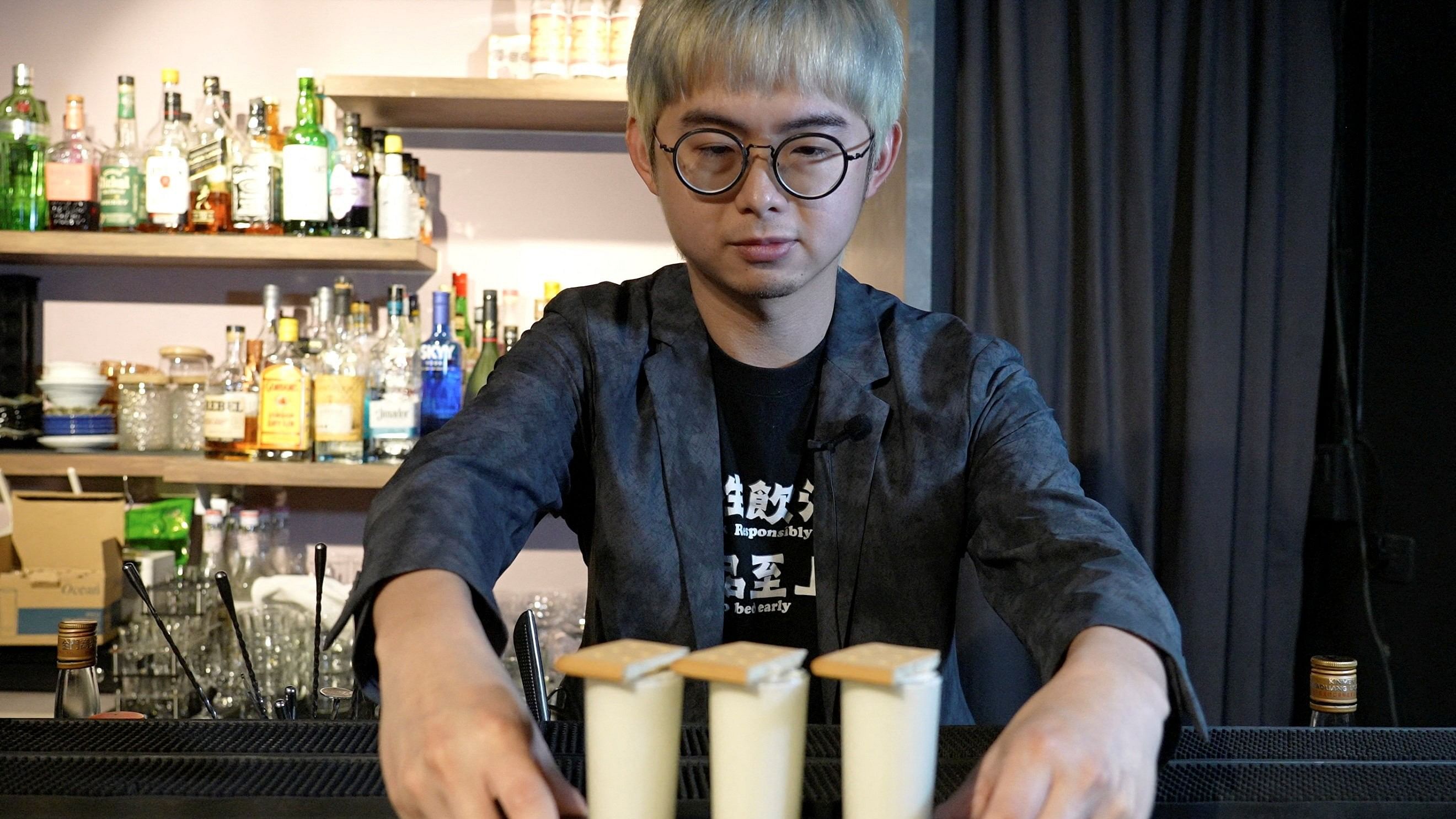
Powei Lee, 31, owner of Kinmen Mojo Bar, displays for the camera the "Pick and Eat" cocktail, in Kinmen Island, Taiwan, May 25, 2024.
Reuters Photo
Kinmen: In Taiwan's Kinmen, less than an hour's boat ride from the Chinese cities of Xiamen and Quanzhou, bar owner Powei Lee draws crowds by blending the tiny island's battle-scared past into cocktails.
During the height of the Cold War, Chinese and Taiwanese forces regularly clashed over Kinmen - then mostly known in English as Quemoy - and other islets controlled by Taipei along China's coast.
While today Kinmen is a fashionable tourist destination, drawing visitors to see its endangered otters and stark natural beauty, it has been back in the news after China last week included areas round the island for its latest war games near Taiwan.
Kinmen native Lee's cocktails at his Vent Bar showcase Kinmen's unique flavour, such as the local fire water, Kaoliang, made with sorghum grown on the island.
Lee, 31, has designed one cocktail inspired by an extensive propaganda campaign which followed fighting in 1958, when Taiwanese forces fended off a Chinese attack on Kinmen, whose closest point is only around 2 km (1.2 miles) from China.
Called "Pick and Eat", the cocktail is made with a base of soy milk, ginger and whisky, topped with cookies.
"Back then, the two sides would drop propaganda leaflets, each trying to show that their side was doing better and urging the other to surrender," he told Reuters.
"One of the things they would do besides the leaflets was to send over supplies like snacks and food, to show that the people were well-fed."
Taiwan has controlled Kinmen, and the Matsu islands further up the coast, since the defeated Republic of China government fled to Taipei in 1949 after losing a civil war with Mao Zedong's communists. No peace treaty has ever been signed.
Old bunkers, many now open to visitors, still dot Kinmen which is home to some 100,000 people, and Taiwan's military maintains a substantial presence.
"I want them (the visitors) to be able to take away something even more meaningful than just typical souvenirs. If they can really feel that connection to the land, and understand the stories behind it, that's going to be the best memento they can have from their time here in Kinmen," Lee said.
Those visitors may be Taiwanese or from further afield - but generally not Chinese. Regular post-pandemic Chinese tourism to Taiwan has yet to resume, amid bickering between Beijing and Taipei.
Life in Kinmen continued largely as normal during the drills last week, residents said, and flights to and from Taiwan's main island were not disrupted.
Regarding the potential for conflict, Lee expressed hope against seeing a war.
"The pandemic has already been very disruptive, and a real war would be far worse," he said.